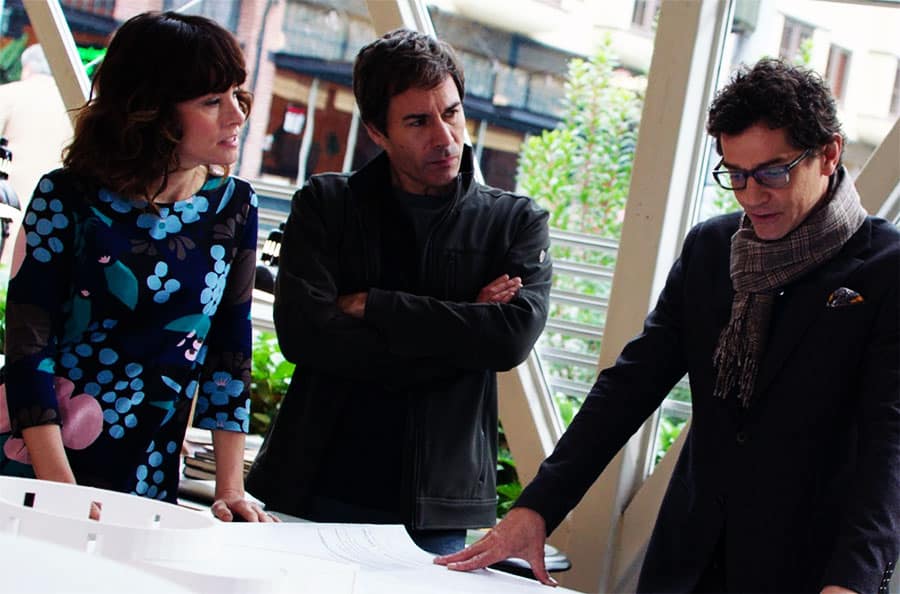3 Unusual Applications that are Being Used in Architecture

Climate change is evident in the extreme summers and winters with an increasing number of fires and tornadoes, reducing agricultural land, increasing corrosion, rising sea levels, melting ice, etc. Hence, various industries such as the industrial sector are preparing to adapt to climate change.
The building blocks of the future construction industry are already being studied by researchers working to develop more reliable and adaptable construction materials. From nanotechnology to erosion preventive construction techniques, the future is already here.
The following are 3 unusual applications that are being used in architecture today.
1. Gabions
Gabions are used to protect river banks, stabilise embankments and channels against erosion. These are manufactured as double-twisted hexagonal steel wire mesh. Gabions are packaged flat and are assembled on site. After assemblage, they are filled with stones and landfill on the project site to create permeable, flexible and monolithic structures. Gabions increase the soil volume and separate/filter small soil particles and nutrients from the aggregate soil base.
The structure of gabions allows for natural drainage and air flow which increases vegetation or serves to restore the soil’s natural fibre for re-vegetation. Hence, gabions promote vegetation growth, maintain ecological balance and increase the soil volume. The load bearing capacity of soil is therefore increased with the help of gabions. As stone fills allow water and air to circulate naturally, additional drainage is not required for maintaining hydrostatic pressure.
Along with preventing soil erosion, gabions are also an architectural solution which provides a unique look to interiors and exteriors. You can read more about Gabions by going to https://www.maccaferri.com/my/products/gabions/ which will give you an insight into the different products available.
2. Aerogel Insulation
Aerogel was first introduced in 2004 as a revolutionary low-density and low-thermal conductivity material. It is a synthetic component which is ultra-light. It is derived from a gel – however, the only difference is that the semi-liquid gel molecules are replaced by gas molecules which give it a translucent appearance. Aerogel is also commonly referred to as blue smoke, solid air and solid smoke.
Aerogel insulation protects residential and commercial buildings from extreme weather conditions. Aerogel insulators are four times more efficient than fibreglass and can withstand extreme hot and cold weather. Aero insulators provide fire resistance equivalent to cellulose, but these are easier to install, handle and maintain. These insulators are not only ‘breathable’ and hydrophobic, but can also prevent corrosion especially on metal surfaces.
Aerogel insulation has become an important part of modern architecture. It is readily used in buildings to protect against modes of heat transfer such as conduction, convection, etc. Aerogel insulators can withstand temperatures up to 200 ⁰C. These can also prevent contraction and expansion during different weather conditions.
3. Nanomaterials
Nanomaterials are suitable to use with ultra-high strength concrete and high-density materials. Different types of nanomaterials such as Carbon Nanotubes are combined with ultra-high strength concrete to enhance tension and compression of the material. Due to such combinations, steel rebar are not required.
Nanomaterial technology is also being researched for other architectural applications such as self-healing concrete. For commodity purposes, nanomaterials are slowly being introduced in the commercial market. Nanomaterials have the following properties:
- These can be used on materials such as metal and ceramic for increased tensile strength and flexibility.
- Nanomaterials have a resilient and self-cleaning finish that resists moisture or even oils from accumulating on the surface. As the concept of nanomaterials comes from nanoparticles, the chances of microscopic particles accumulating on the surface are low.
- All nanomaterials are wave benders. When exposed to seismic structures, the geometric microscopic pattern of nanomaterials resists the movement in a wave like pattern, thus ensuring increased reliability and weather resistance.
- When used with concrete or other metals, nanomaterials serve to enhance the strength of the construction material. Researchers are now studying how this characteristic of nanomaterials can be used to make buildings resistant to shock and other natural calamities.
As technological sciences change, the construction and industrial patterns also change. Architectural designs have now adapted to environment-friendly construction without compromising the overall quality and style.
Add CEOWORLD magazine to your Google News feed.
Follow CEOWORLD magazine headlines on: Google News, LinkedIn, Twitter, and Facebook.
This report/news/ranking/statistics has been prepared only for general guidance on matters of interest and does not constitute professional advice. You should not act upon the information contained in this publication without obtaining specific professional advice. No representation or warranty (express or implied) is given as to the accuracy or completeness of the information contained in this publication, and, to the extent permitted by law, CEOWORLD magazine does not accept or assume any liability, responsibility or duty of care for any consequences of you or anyone else acting, or refraining to act, in reliance on the information contained in this publication or for any decision based on it.
Copyright 2024 The CEOWORLD magazine. All rights reserved. This material (and any extract from it) must not be copied, redistributed or placed on any website, without CEOWORLD magazine' prior written consent. For media queries, please contact: info@ceoworld.biz
SUBSCRIBE NEWSLETTER








